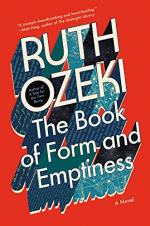|
This section contains 1,213 words (approx. 4 pages at 400 words per page) |

|
Point of View
The Book of Form and Emptiness is written from the first, second, and third person points of view. The sections entitled “Benny” are written from Benny’s first person point of view. The sections entitled “The Book” are written from the Book’s first person plural perspective. At the starts of these sections, the Book will often employ the direct address. This means that the Book will address their narration directly to Benny. Over the course of the novel, a conversation between Benny and the Book emerges on the page, one which propels the narrative forward, complicates the narrative stakes, and enacts the author’s thematic explorations. This exchange emerges within the opening sections of Part 1, “Home.” After the Book describes Kenji’s death and his family’s response to it, Benny’s section interrupts this first person plural narration, saying: “Wait, aren’t you...
|
This section contains 1,213 words (approx. 4 pages at 400 words per page) |

|




